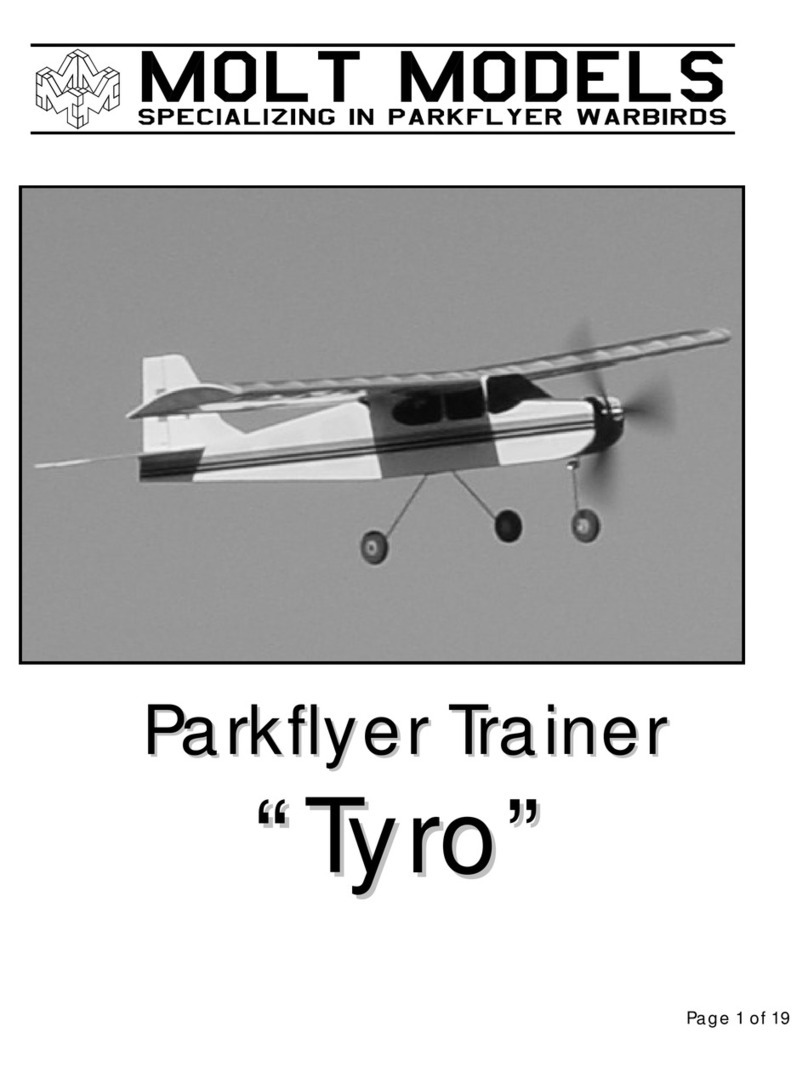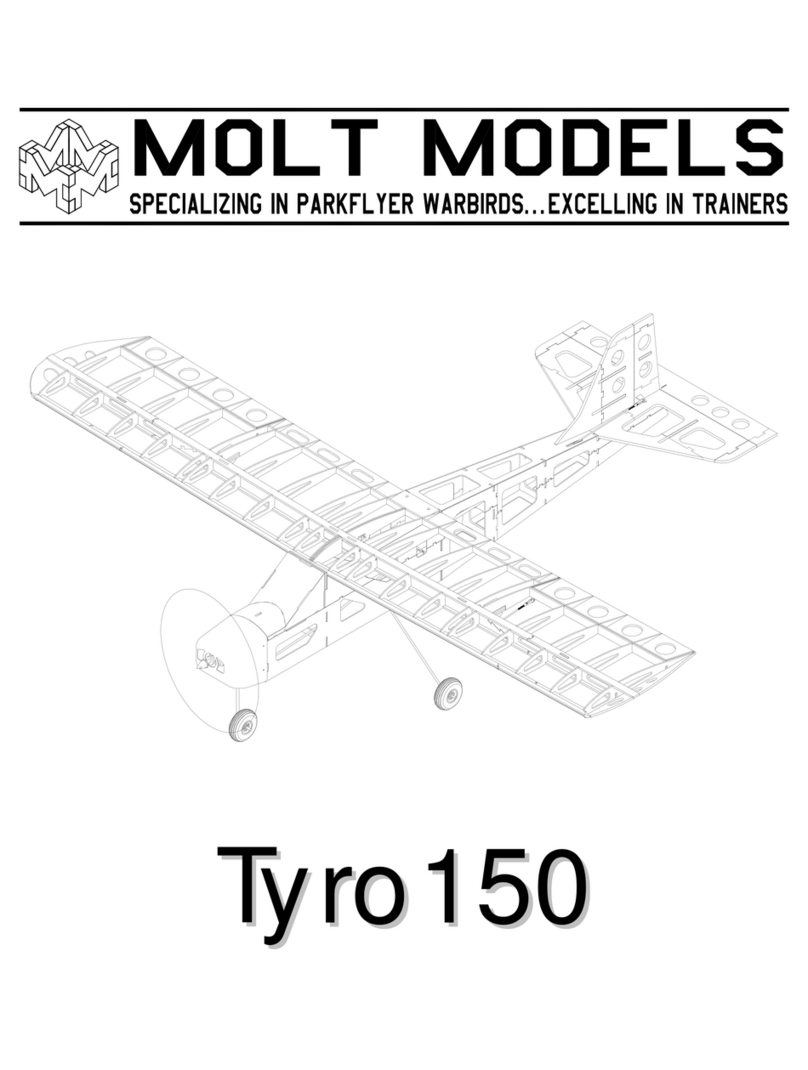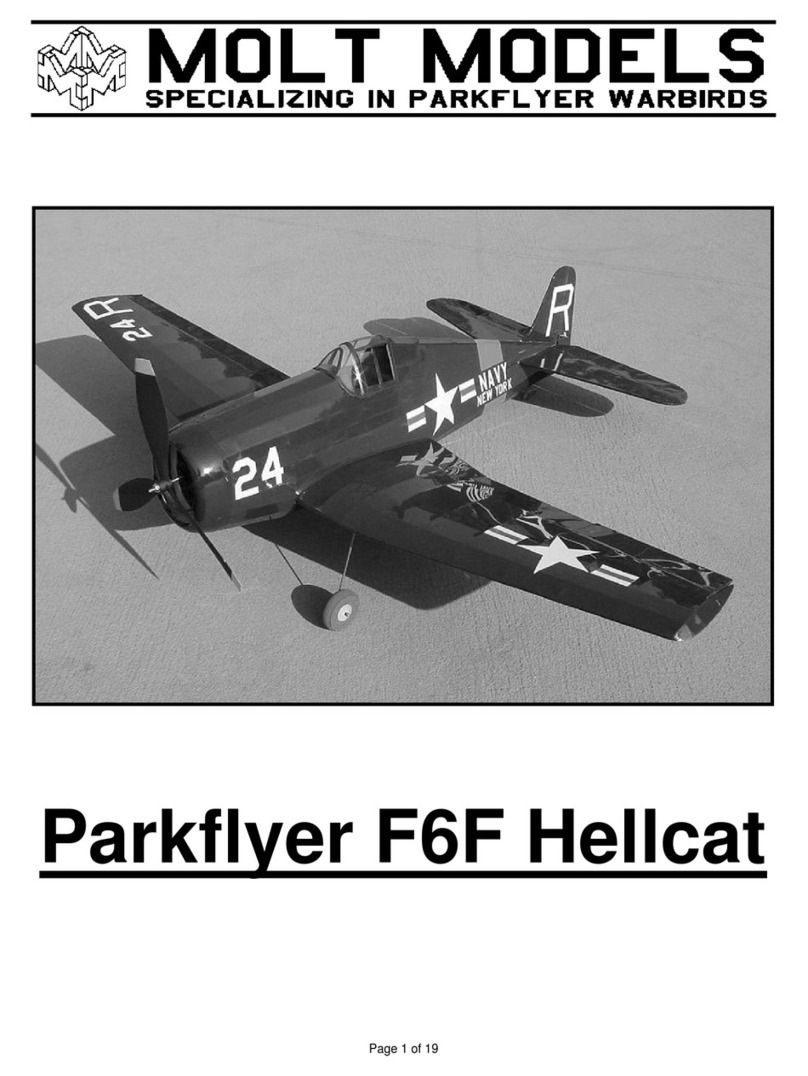
Molt Models P-38 Building Instructions Rev A
© Copyright 2004 Molt Models. All rights reserved. 3 of 44
Molt Models Parkflyer P-38 Lightning Specifications and Kit Requirements
The P-38 Lightning is a fully functional aileron, rudder, elevator, and throttle controlled
aircraft (4 channel). You may build the P-38 Lightning to fly with aileron, elevator, and
throttle only by gluing the rudders to the vertical stabilizers. If you decide to do this I
would recommend that you leave the landing gear off as take off and landing on a
hard surface will be difficult without a rudder. I also recommend leaving the landing
gear off if you intend to fly on grass only. If you fly on a nice hard surface, the P-38
Lightning with all functions and landing gear is quite impressive. On the other hand I
definitely do not recommend you attempt to fly the P-38 Lightning as a rudder,
elevator, and throttle only model.
P-38 Lightning Specifications
Length: 26 in
Wing Span: 38 in
Wing Area: 216 in2
Flying Weight: 10.0 ~ 12.0 oz
Wing Loading: 6.67 ~ 8.00 oz/ft2
Power System: GWS S1 IPS
Functions: Aileron, Elevator, Rudder, & Throttle
Battery Pack: 7.4V, 1200mAh or larger Lithium Polymer
Parts you will need to complete the P-38
Lightning kit:
• (2) GWS IPS (“S1” gearing) and
manufacturer recommend propellers
• (1) 4 channel receiver
• (1) 10A Electronic Speed Control
• (3) Servos (Hitec HS-55 or GWS Pico/Naro)
(4 Channel)
• (2) 12” servo extensions
• (2) Female JST connectors
• (1) Male JST connector
• (1) Red wire, 20” long
• (1) Black wire, 20” long
• (1) Roll of Nelson Lite Film AKA Solite
covering
Supplies and tools you will need to complete
the P-38 Lightning kit:
• Hobby knife and blades
• Stickpins
• Pliers
• 90-degree triangle
• Ruler
• Covering iron
• Fine tip ink pen
• Fine/medium sand paper
• 5-minute epoxy
• Thin CA glue and fine extension tip
• Wood glue
• Wax paper or plan protection plastic
• 3/4" transparent tape
• Masking tape






























